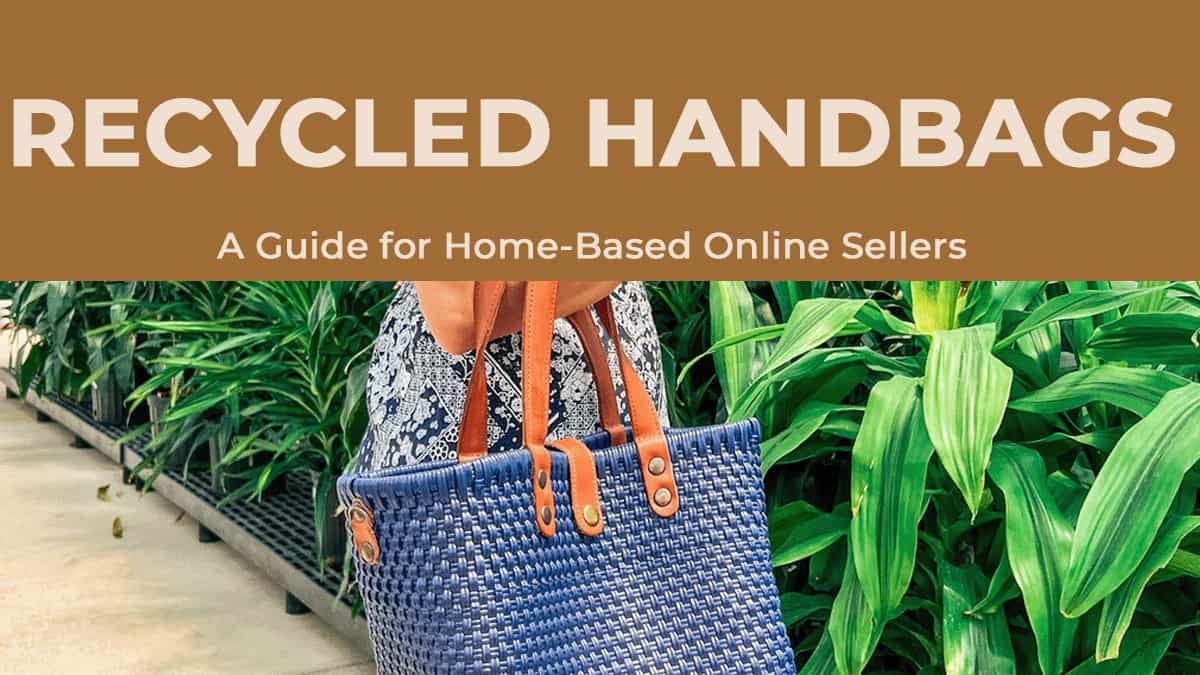Introduction to Recycled Handbags
Recycled handbags are emerging as a standout choice for eco-conscious buyers, offering a sustainable twist on a timeless accessory that’s readily available through WorldwideBrands.com’s network of 17 million products from verified wholesalers. These stylish bags, crafted from repurposed materials like plastic bottles and organic fabrics, tap into a growing demand for green fashion, making them an ideal product line for home-based online sellers looking to align with current market trends. Their appeal lies in combining practicality with a powerful environmental message, positioning sellers to attract a niche yet expanding audience eager for sustainable options.
Market Snapshot: The Rise of Recycled Handbags
The recycled handbags market is on an upward trajectory, projected to reach USD 3.4 billion in 2025 with a robust CAGR of 12.1% through 2033, driven by rising consumer awareness of sustainability, as noted in recent industry reports. Searches for eco-friendly bags have spiked by 18% on Google Trends in 2025, reflecting a surge in interest across platforms like Amazon and REI, where stable sales of sustainable products signal market reliability. This growth presents a golden opportunity for sellers, as the shift toward green materials like mycelium leather and recycled plastics opens doors for innovative offerings in a competitive yet rewarding space.
Target Demographic: Who’s Buying the Best Recycled Handbags?
The primary demographic for recycled handbags includes adults aged 25-45, particularly those valuing sustainability and ethical consumption, who frequent eco-focused sites and engage heavily on Instagram and Pinterest for inspiration. A secondary audience comprises younger buyers, 18-24, who prioritize trendy, affordable green options and shop via TikTok Shop or Etsy, drawn by viral eco-fashion trends. Sellers can target these groups by leveraging social media ads and partnering with influencers who champion sustainable lifestyles, ensuring their marketing resonates with these distinct shopping habits.
Demand and Competition Analysis for Recycled Handbags
Demand for recycled handbags is strong, with Google Trends showing 15,000 monthly global searches in 2025, indicating a solid interest among eco-conscious shoppers, while sales data from Amazon reflects a 20% year-over-year increase. Competition is fierce on Amazon and eBay, where high fees (15-20%) and crowded listings squeeze margins, but independent websites offer lower competition and higher control, allowing sellers to stand out with unique branding. The drawback of these platforms is their fee structure, whereas websites enable better profit margins and direct customer relationships, making them a smarter long-term choice.
Profit Margin Potential of the Best Recycled Handbags
Wholesale prices for recycled handbags typically range from $15 to $30 per unit through verified suppliers, with retail prices on Amazon or eBay set at $40 to $70, yielding a gross margin of 50-60% before fees cut it to 35-45% net. On independent websites, retail can reach $60 to $100, boosting gross margins to 65-70% and net margins to 55-60% after minimal hosting costs. Profitability hinges on sourcing efficient suppliers, minimizing shipping costs, and marketing effectively, with websites offering the edge for maximizing returns over time.
Year-Round Drawback of Selling Recycled Handbags
A key challenge of selling recycled handbags year-round is the seasonal dip in eco-product interest during late fall and winter, with sales dropping by 10-15% from November to January as holiday shopping shifts to traditional gifts, per 2025 ecommerce trends. This fluctuation can strain inventory management and revenue consistency. Sellers can mitigate this by bundling handbags with winter accessories or launching targeted email campaigns highlighting their eco-benefits, keeping engagement steady across seasons.
Viability Verdict and Actionable Advice for Recycled Handbags
Recycled handbags are a highly viable product line for home-based online sellers, backed by strong demand, manageable competition on independent sites, and lucrative profit margins of 55-60% net. The market’s growth and eco-trend alignment make it a smart choice, though sellers must navigate seasonal dips with strategic marketing. Before launching, research top listings on Amazon and eBay to gauge pricing, study eco-focused audiences on Instagram, and source reliable products via WorldwideBrands.com to ensure quality and profitability, with websites offering the best platform for long-term success.

